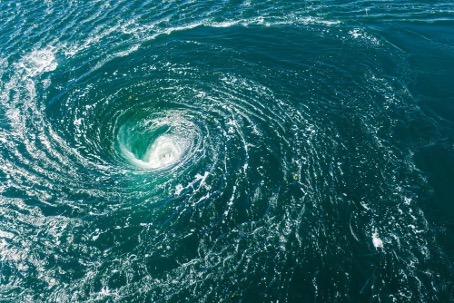Although invisible to the naked eye, eddies play a major role in ocean dynamics. These small-scale rotating structures influence water mass circulation, nutrient distribution and, consequently, the functioning of marine ecosystems. However, their rapid movement and varying sizes make them particularly difficult to observe and track. A recent study published by a team of American researchers compared the reliability of data obtained by satellites and by various means at sea in detecting and tracking eddy phenomena in the Atlantic.
by Laurie Henry
Cover photo : ocean eddies © Shutterstock
Eddies for studying ocean properties
Tracking the same body of water in the ocean over several days is a constant challenge. Currents, winds and ocean turbulence constantly shift particles and living organisms. To get around this difficulty, scientists use what they call the Lagrangian approach, which involves tracking the movement of a given volume of water rather than staying at a fixed point. However, this approach only works if the volume of water being studied remains relatively consistent over time.
This is the case, for example, with eddies in the ocean. Anticyclonic eddies (rotating clockwise in the northern hemisphere) contain, in particular, so-called ‘modal’ waters, which give them a stable internal structure and a strong capacity to retain water masses at their centre. These stable eddy structures thus offer scientists the opportunity to study the evolution of the physical, chemical and biological properties of the ocean over several days.
